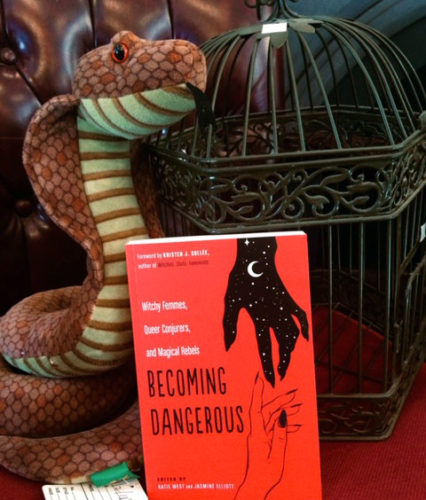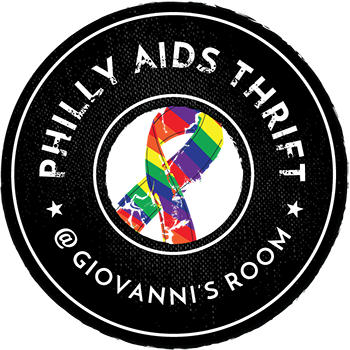
I discovered Wicca: A Guide for the Solitary Practitioner on the bottom, dusty shelf of a local bookstore way back in 1997. I asked for tarot cards that Christmas, and it’s been a slippery slope since. There was no way I was going to pass up Becoming Dangerous: Witchy Femmes, Queer Conjurers, and Magical Rebels.
Becoming Dangerous is a nonfiction anthology — a collection of twenty-one personal essays from a group of women of diverse ethnic, racial, and identity backgrounds. A good chunk of the writers are women of color, and there’s actually more than just one trans woman among them, which (as these collections usually go) is pretty fantastic. The theme of the anthology — although I use the term very loosely — is less actual witchery, more a focus on ritual behaviors, supernatural or otherwise, and how the writers use them to manifest their chosen identities.
If that sounds a bit vague, that’s because it is. It covers everything from lifting weights to self-care (a lot of self-care) to dumpster diving, and that doesn’t always work in the anthology’s favor. It feels as though the editors erred on the side of inclusivity, which is understandable in theory. In practice the book sandwiches passionate rebuttals of consumerism and other evils of late capitalism between stories of how a specific branded eyeshadow palette links the user with her patron goddess, or an essay on “skin alchemy” which is really ten solid pages of Korean product recommendations. At best the effect is one of whiplash, at worst you get cissexist language (equating loving men with “appreciation for penises”) in a collection which trades heavily in its marketing on the inclusion of trans writers.
The lack of editorial rigor is echoed in some of the essays as well. Becoming Dangerous frequently prioritizes empowerment over close examination, with broad sociopolitical statements that deserve much more unpacking, but don’t get it. Perhaps these writers assumed — correctly — that they’d be preaching to the proverbial choir, and didn’t feel the need to justify their condemnation of patriarchal structures or celebration of feminine power. But arguably because I agree, I wanted more: more analysis of what upholds these structures and why, more dissection of individual rebellion and its context, more about how each author’s journey brought them to their personal brand of magic. The better essays of the anthology do just that; the rest trend toward forgettable, buzzword-y sameness.
Those better essays are very good, however, with meditations on ritualizing strength training and sparring, a garden as an altar to the bounty and transience of life, the journey of a woman who shaved off all her hair and the subsequent exploration of identity, etc. Three essays in particular are phenomenal standouts of the collection. Sim Bajwa’s “Touching Pennies, Painting Nails,” is about the evolution of the writer’s appreciation for the rituals — both magical and of agency — that she once dismissed from her mother and her mother’s community of women. “Gayuma,” from Sara David, explores (in truly lyrical prose) family history and personal trauma, blowing the lid off the assumption that love magic is about better orgasms or a bed partner: “Love magic is justice.” And finally J.A. Micheline’s “Ritualizing my Humanity,” which arguably blows the lid off of Becoming Dangerous itself — arguing that not being perceived as dangerous, solely because of her blackness, is a process she has to purposefully enact, every day. That perhaps the “witch” identity is a privilege in itself, because in order to become a witch, you must be first assumed by others to be fully human.
Ultimately, Becoming Dangerous is recommended for anyone interested in the breadth of experience and discourse about how the political is deeply, intrinsically personal for women today.
Review by Katharine, a volunteer at Philly AIDS Thrift @ Giovanni’s Room.
Get Your Copy Today:
Becoming Dangerous: Witchy Femmes, Queer Conjurers, and Magical Rebels
